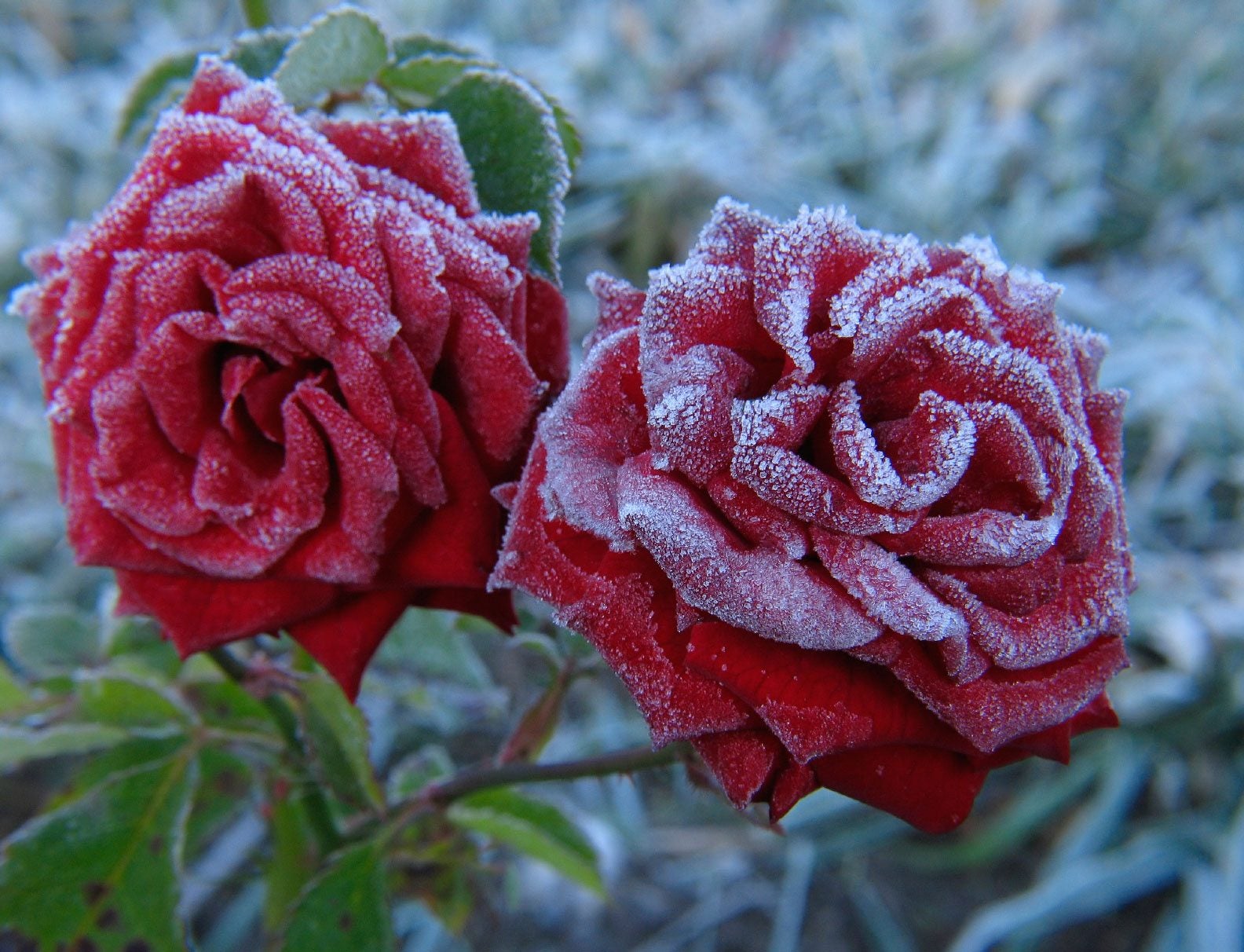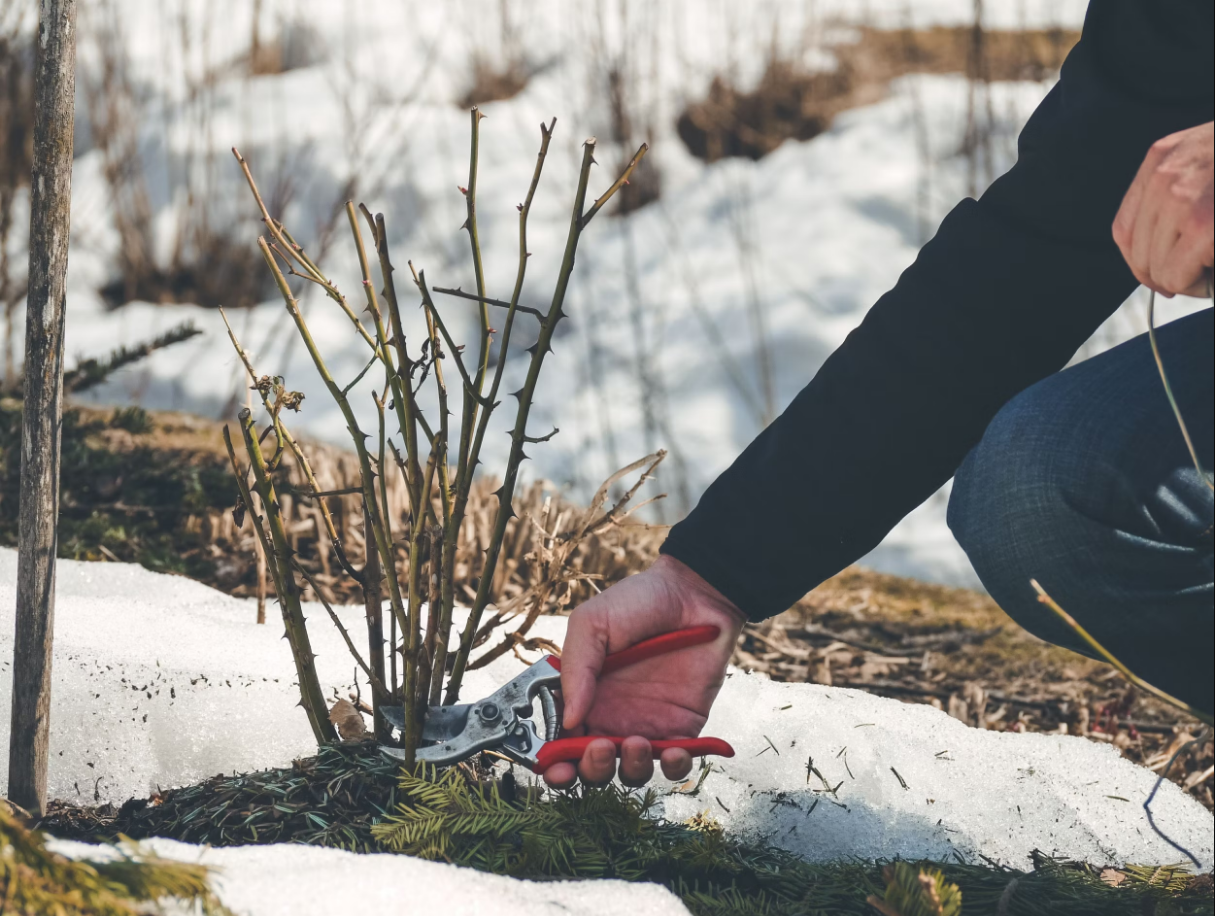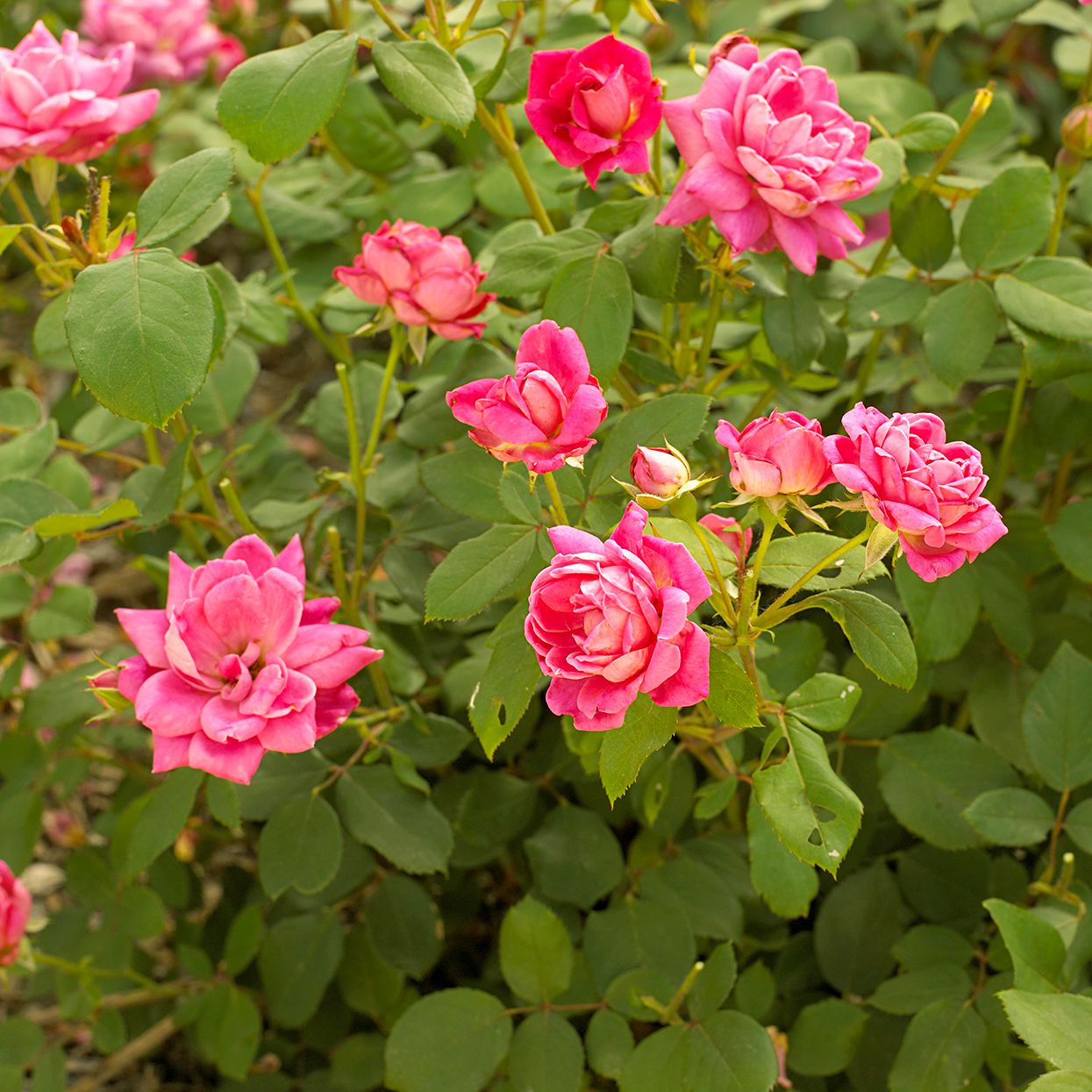How To Protect Your Roses From Winter? 10 Essential Steps
Roses need extra care during winter to survive harsh conditions. Discover the best techniques to protect them from frost and freezing temperatures.
Sep 16, 202446K Shares613.3K Views

As the colder months approach, your roses face one of their biggest challenges - surviving the winter. While roses are resilient, they still need extra care to withstand freezing temperatures, strong winds, and fluctuating weather.
Ensuring that your roses are properly protected can make the difference between a thriving garden in spring and plants that struggle to recover from winter damage.
From selecting the right rose varietiesfor your region to preparing them for the first frost, you’ll learn how to help your roses not just survive but flourish when the warmth returns.
Understanding The Impact Of Winter On Roses
Winter conditions, such as freezing temperatures and fluctuating weather, can have severe effects on roses. The freeze-thaw cycles can cause the ground to heave, pushing plants out of the soil and damaging their roots.
Grafted rosesneed extra care to protect the union, as the scion (grafted-on part) is more vulnerable to cold damage than the rootstock.
Choosing The Right Rose For Your Zone
Selecting roses suited for your hardiness zone can make winter care much easier. Some top choices for cold climates include:
Best Winter Hardy Roses
Winter hardy roses are ideal for those who want beautiful blooms without the hassle of extensive winter prep. Varieties like Distant Drums, Polar Express, and Rosa Rugosa are tough yet beautiful, surviving colder winters with minimal intervention.
Griffith Buck Roses
Developed in Iowa to withstand cold winters, these roses are disease-resistant and hardy. They can be planted in zones 4 and 5 and don’t require extra winter protection like other varieties.
Own-Root Roses
These roses are less vulnerable to winter injury and recover more quickly from winter damage compared to grafted roses. They come in various sizes and colors, offering options for all gardeners.
When To Start Preparing Your Roses For Winter
Winterizing roses too early can encourage new growth during late fall warm spells, which will freeze and die when true winter arrives. It’s essential to wait until the ground is frozen or nearly frozen and no more warm days are forecast.
In areas with mild winters (typically USDA Hardiness Zones 6 and above), begin preparations in early fall. Stop cutting roses to allow them to form hips (seedpods), which signal the plant to start preparing for dormancy.
Prepping Your Roses For Winter
Before winter arrives, proper fall preparation is key to keeping your roses healthy through the cold months. Here’s a checklist to ensure your roses are ready for winter:
- Sunlight & Soil: Ensure your roses are in full sun, receiving at least 6 hours of light daily. Soil pHshould be between 6.0 and 6.5 for optimal health.
- Fertilization: Stop fertilizing in late summer to prevent new growth, which is more vulnerable to frost.
- Watering: Water deeply at the base, providing about 2 inches per week.
- Clear Debris: Remove dead leaves and debris from the base to prevent fungal infections.
- Stop Deadheading: Allow roses to form hips, which help prepare them for winter.
- Avoid Pruning: Save major pruning for spring to avoid stimulating tender new growth.
10 Essential Steps To Protect Roses From Winter
1. Prune Carefully In Late Fall
Pruning is essential for removing dead or diseased wood, which can harbor pests over winter. Pruning rosesis crucial part of rose carethat supports the overall health and longevity of your plants.
But be careful not to prune too early - it can stimulate growth that will be damaged by the cold. If you skip this step, you may find your roses struggling with broken canes in the spring.
2. Water Deeply Before The First Frost
Water your roses deeply in the fall to keep their roots hydrated through winter. Moist soil freezes slower than dry soil, providing better insulation. If you skip this, the soil may freeze too quickly, damaging the roots.
3. Add Mulch To Insulate The Roots
Mulching helps insulate the soil and maintain stable temperatures around the roots. Apply a 6-8 inch layer of mulch such as wood chips, shredded leaves, or bark. If you skip this, your roses may suffer from fluctuating soil temperatures, leading to root damage.
4. Hilling Soil Around The Base
In cold regions, hilling soil around the base of your roses adds extra protection. Mound the soil about 12 inches high around the rose's base, covering the bud union entirely. If skipped, the bud union may freeze, resulting in damage to the rose’s graft.
5. Use Burlap Or Frost Covers For Protection
Use burlap or frost cloth to shield roses from harsh winds. Secure the cloth with stakes to prevent it from blowing away. Without this, wind exposure could dry out and damage the canes.
6. Monitor Roses During Thaws
Keep an eye on your roses during thawing periods. The freeze-thaw cycles can crack stems or uproot the plants. If left unchecked, this can cause permanent damage to the root system.
7. Protecting Grafted Roses: Cover The Bud Union
Covering the bud union of grafted roses is crucial. Mound soil over the graft to ensure it remains protected from freezing temperatures. Neglecting this can lead to the scion dying and the plant reverting to the rootstock.
8. Trenching For Extra-Cold Climates
In areas with sub-zero temperatures, trenching offers extra protection:
- Remove any leaves and cut back canes to about 1 foot tall.
- Dig a trench next to the plant and lay the rose in it.
- Cover the plant with soil and shredded leaves for insulation. In spring, replant the rose.
9. Tree Rose Winter Protection
Tree roses are more vulnerable because their graft union is higher. Use straw or soil around the base, and wrap burlap around the rose, securing it with stakes.
10. Winter Protection For Potted Roses
Potted roses need extra protection since their roots are more exposed. Move the pots into an unheated garage, and pack the container with dry leaves or shredded newspaper. Without this step, potted roses can freeze solid and die.
Common Mistakes To Avoid When Winterizing Roses
Avoiding these common errors can save your roses from winter damage:
- Pruning too early: Early pruning stimulates growth that will be damaged by frost.
- Over-mulching: Too much mulch can suffocate the plant and cause rot.
- Forgetting to protect the bud union: This can result in losing the grafted part of the rose, leaving only the rootstock.
- Leaving roses unprotected in windy areas: Wind can dry out the canes, making them brittle.
Winter Rose Care In Different Climates
Zones 1-6: How To Winterize Roses
Hilling Method
Pile loose soil around the base of the plant, creating a mound at least 12 inches wide and high. Cover this with mulch for extra insulation.
Using Rose Cones
Choose biodegradable or styrofoam cones with ventilation holes. Place the cone over the mounded soil and secure it to prevent wind damage.
Bending Down Climbers and Shrubs
For climbers, detach canes from their supports and bend them carefully to the ground. Cover with soil or mulch for protection.
Zones 7-13: Simplified Winterizing
In warmer zones, mulching is often enough. Add a 2-3 inch layer of mulch around the base of the rose to protect it from cold snaps.
FAQs About Protecting Roses From Winter
Do I Need To Water My Roses In Winter?
Yes, watering your roses deeply before the ground freezes helps the root system retain moisture. Once the ground is frozen, there's no need to continue watering.
Can All Rose Varieties Survive Winter?
Not all roses are equally cold-hardy. Grafted varieties like hybrid teas are more vulnerable to cold damage, while hardy varieties like Rugosa roses are better suited for freezing temperatures.
How Much Mulch Should I Use Around Roses For Winter?
Apply a mulch layer that is about 6-8 inches thick. This insulates the soil and helps stabilize temperature. Avoid piling mulch directly against the stem to prevent rot.
Should I Prune Roses Before Or After Winter?
Light pruning in late fall is fine, but major pruning should wait until early spring. Avoid heavy pruning in the fall, as it can stimulate new growth that is susceptible to frost.
Conclusion
Taking the time to winterize your roses can save them from the harshest elements and ensure healthy blooms in the coming seasons. Winter protection is essential for maintaining the beauty and health of your roses, no matter how cold it gets.
With the right preparation, your roses will be ready to face the toughest conditions and return stronger, ensuring they continue to be the centerpiece of your garden for years to come.
Jump to
Understanding The Impact Of Winter On Roses
Choosing The Right Rose For Your Zone
When To Start Preparing Your Roses For Winter
Prepping Your Roses For Winter
10 Essential Steps To Protect Roses From Winter
Common Mistakes To Avoid When Winterizing Roses
Winter Rose Care In Different Climates
FAQs About Protecting Roses From Winter
Conclusion
Latest Articles
Popular Articles

